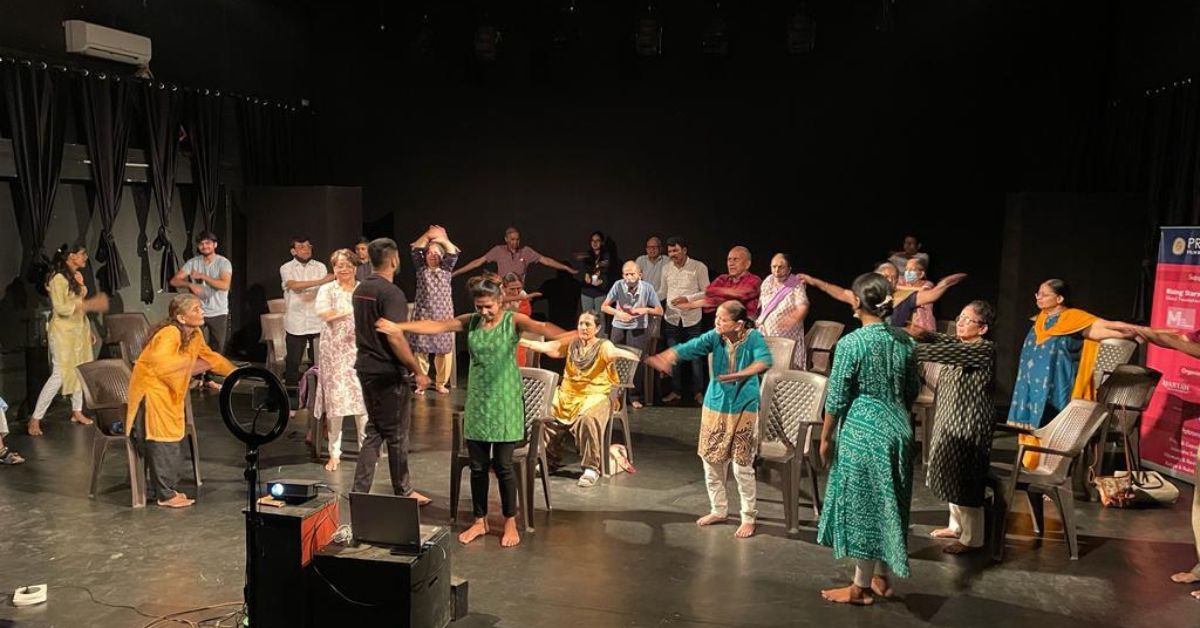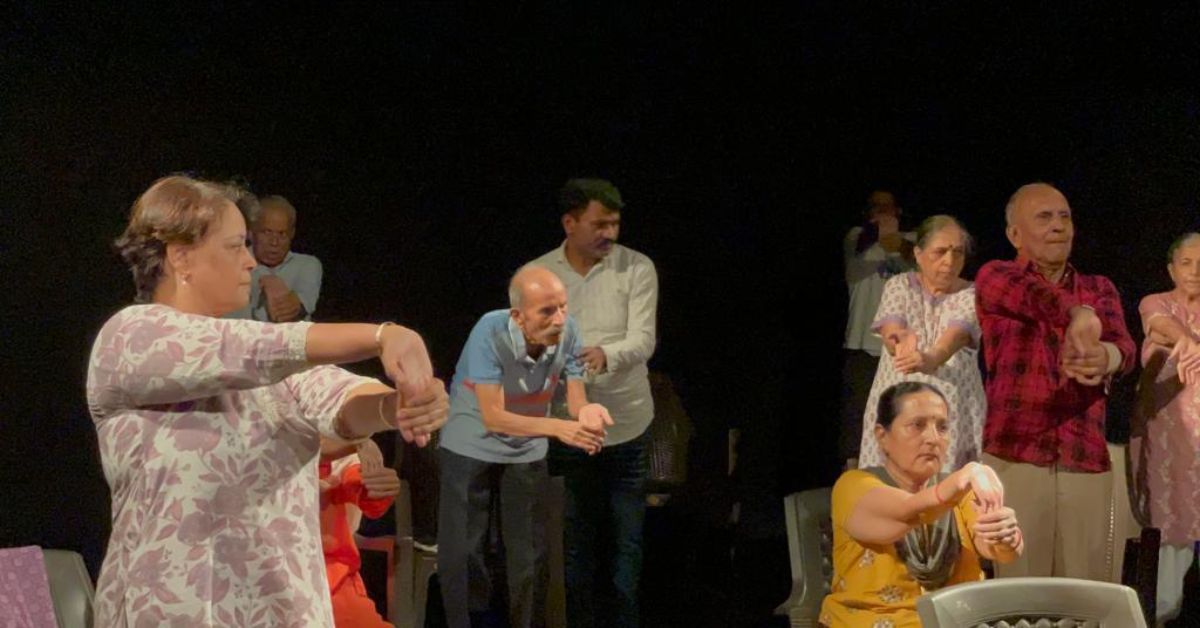Every morning, several senior citizens throng to the Hrishikesh Centre for Contemporary Dance. Here, they gather with enthusiasm to learn and master dance steps. These are patients with Parkinson’s disease, for whom dance has been serving as a rescue since the endeavour started in 2011.
“I started this initiative more than a decade ago and have taught nearly a thousand senior citizens with Parkinson’s disease. I wanted to normalise this condition and help them improve balance and coordination,” says Hrishikesh Pawar, the founder of the centre, to The Better India.
For the past decade and a half, Hrishikesh has held these classes for free in Pune. His students come from all over the country including Bengaluru, Chennai and Mumbai.
Born to dance
Hrishikesh was born into a conventional family, where dancing was regarded as a pastime rather than a feasible professional path. “I was raised in a very traditional Marathi family. Like most parents, mine, too, wanted me to join a conventional profession. However, I was always confused about who I wanted to become,” he says.
“This constant clash of what I wanted and what I was supposed to be, made me a shy and timid personality. What came to my rescue was performing arts. My school had a fantastic extracurricular subject and that is how I fell in love with dance,” Hrishikesh adds.
He recalls that once he started dancing and pursuing theatre, his life completely changed.

“It was quite a change from what I used to be. My seniors in school were nicer to me and I was able to gain more confidence. I trace it back to dance because I was able to freely express myself through it,” he says.
When Hrishikesh reached Class 11, his school teacher pushed him to opt for formal dance classes to enhance his skills. “In many ways, she is responsible for who I am today. I remember her telling me that I am a good dancer, but I need professional help to enhance it. Until then, I didn’t even know that people can take dancing as a profession,” he recalls.
Hrishkesh started taking Kathak classes, and that is how his journey of becoming a dance instructor began.
“I have learnt from many brilliant gurus and realised that there is a world out there for performing arts. Back in the 90s, there was no concept of becoming a professional dancer, especially in a middle-class Indian family,” he says.
While he faced some resistance and found a lack of avenues for a male dancer in society, Hrishikesh could not see himself doing anything else. In 2008, he founded his own dance classes in Pune to share his passion.
“Most of the dance classes that we see are hobby-driven. There are only a few where students actually go to learn and become professionals themselves,” he says.
‘Their smiles motivate me’
Hrishikesh says he wanted to help others find confidence through dance, the way he had in his childhood. “This idea laid the roots for the initiative to help people with Parkinson’s disease. The intervention project with Parkinson’s patients starts with the intention to bring them confidence and show people that anyone can opt to become a dancer,” he says.
He continues, “I thought that when people see a group of senior people coming in the studio and going back with smiles, it is bound to motivate the youth. This will also show them that there are ways where they can use dance to make a profession out of it.”
Another inspiration behind his work was the Mark Morris Dance Group and their Brooklyn Parkinson Group (BPG), which started offering free dance classes for Parkinson’s disease patients.

“I collaborated with Sancheti Hospital and asked them to host me in the hospital for a few sessions. I met with neurologists, therapists and specialists to understand how I would need to deal with a patient,” he says.
“I chose to start a pilot project from a hospital so that help is nearby and also people would trust me there. This is how it started to grow and in 2011, I moved the classes to my studio and have never looked back ever since,” he says. “I wanted to create something that opens its arms to people, and gives them a free and loving space to just enjoy.”
For the past decade, Hrishikesh has conducted numerous classes and workshops teaching thousands of patients.
Can dance therapy really be useful?
There is still little awareness of the disease, Hrishikesh opines. “At the studio, this goes away — all of the senior citizens are giggling like young children, forgetting about their worries, and it motivates me to keep going,” he adds.
“I like to take up newer challenges. Selfishly, I wanted to keep my work adventurous and get the satisfaction that comes from working for society. To find a career in dance was, for sure, one of my goals. But I wanted to create a space for dance lovers. The life of a Parkinson’s disease patient is very hard, even routine work is a little harder for them. The fact that they wake up every day, get dressed, and come to my classes is a huge motivation and win for me.”
Dr Praveen Gupta, principal director and head of neurology at Fortis Hospital, Gurugram, explains how the illness attacks the brain. He says, “Parkinson’s Disease, in very simple terms, is a disease that happens because of a lack of cells that produce dopamine hormones. This hormone is the main transmitter in the body for movement, without which the brain fails to direct the muscles to move.”
“The disease is age specific and the risk increases as a person grows older. With age, the cells gradually start to reduce. But in some cases it becomes severe. It usually attacks people above the age of 50 years,” he adds.
Explaining the various symptoms of the disease, Dr Sarath Narayan, senior resident, Department of Emergency Medicine, Sarvodaya Hospital and Research Centre, says, “The hormone dopamine is mostly responsible for the movements in the body, as well as the moods of the person. So the main symptoms include tremors, slowed down movements, facial muscle movement failure, etc.”

“In severe cases, one could end up losing the use of their eyes, or suffer erectile dysfunction and autonomic dysfunction,” he adds.
The doctors say there is no way to cure the disease, but there are ways to slow it down.
Talking about how dance and music therapy helps in slowing the progression of the disease, Dr
Gupta says, “The disease’s symptoms should be treated mainly with medicine. But dance, music and physiotherapies can also be equally helpful in slowing down the progression. Dance therapy teaches the patients to manoeuvre the body with an impairment. It also aids better muscle coordination, which is greatly helpful to the patients.”
“Moreover, dancing or music can also help uplift the patients’ mood. It also helps improve gait, balance, cognition, and physical capacity. The social participation aspects of group dance are antidepressant actions that help the patients,” says Dr Narayan.
(Edited by Divya Sethu)
